Bridge divide concern in West Philadelphia
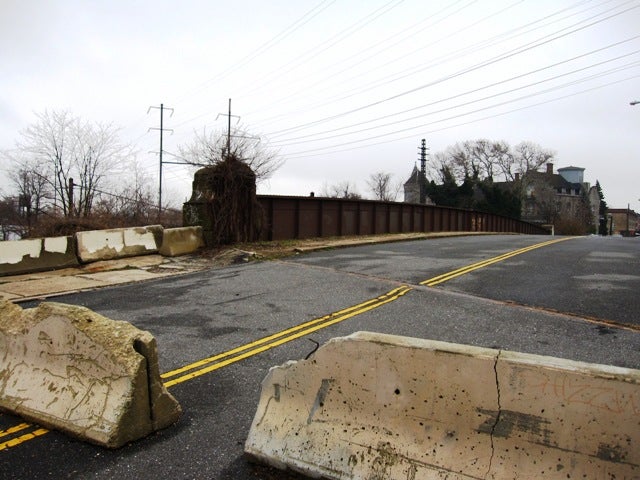
Jan. 28
By Steven B. Ujifusa
For PlanPhilly
Robert Cousar, a board member of the East Parkside Community Revitalization Corporation, feels that his neighborhood has been “literally abandoned and forgotten by some… but that’s just an opinion.”
At the heart of his argument are the east-west Amtrak railroad tracks that sever Parkside from the rest of West Philadelphia. Three street bridges span these tracks. But only one of them is open. The bridges at 40th and 41st Streets are closed, blocked by concrete barriers and strewn with trash.
According to Jon Musselman, Director of Project Planning for Habitat for Humanity in Philadelphia, the 41th Street Bridge has been closed for upwards of fifteen years as the result of a maintenance dispute between SEPTA and the city or the city and Amtrak. The Streets Dept. blocked off the 40th Street Bridge a few years ago, he added, even though it was a major bus route.
On the bright side, the bridge at 42nd Street, a recently-restored steel truss structure, is open to pedestrians and vehicular traffic. And the city says it is committed to repairing the two closed bridges.
According to John Lutz of the Philadelphia Streets Department, the 41st Street Bridge is an Amtrak structure. According to Lutz, in a series of court cases the city tried to get Amtrak to pony up the funds needed to fix and reopen the bridge. The city, Lutz said, won every court case except the last one, and Philadelphia got “saddled” with the project.
To many residents, these bridges are not just centers of blight, but symbols of a neighborhood’s isolation. Residents feel they are cut off from city services, employment centers, the Microsoft “School of the Future,” and the Philadelphia Zoo.
The bridge closures have not only disrupted car and pedestrian traffic, but also the Route 43 Parkside bus route. Cousar claims that police response times have doubled as a result of the bridge closures, and that criminals are taking advantage of this. Even worse, many feel that these abandoned structures are magnets for prostitutes, drug dealers, and illegal trash dumpers.
“The only way to get in [the neighborhood] is through the bridges,” notes Cousar. The closures have caused “a lot of traffic over Poplar.”
Alice Wright, who lives at 40th and Pennsgrove and is affiliated with the United Block Captains Association, described the bridge closures as being “really bad for a lot of seniors and some of the youth.” Older residents, she said, now must walk an additional few blocks to the 42nd Street Bridge. They are “scared to death” after nightfall.
Although the city does plan to repair and reopen the spans, Cousar feels the community has been “disserved” for too long. “We hope to have the bridges done as quickly as possible,” he insists. “It’s been damaging to our neighborhood. If you look at 40th Street there are no active businesses there.” In order to shop for groceries and other basic needs, Cousar says that most residents have to go outside the neighborhood.
* * * *
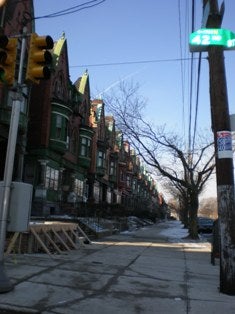
East Parkside, as its name suggests, borders the southern edge of Fairmount Park on the west bank of the Schuylkill. It boasts grand residential architecture and easy access to green space. But this was not enough to keep East Parkside healthy over the past century.
Today, many of its structures are either abandoned or in poor repair. According to the East Parkside Community Development Corporation, the neighborhood is plagued by a 36% vacancy rate, and is pockmarked by 220 abandoned structures and 350 vacant lots. Unemployment hovers around 16%, and 34% of residents have incomes below the 100% poverty level. (i)
Habitat’s Musselman feels that the bridge situation makes East Parkside, “more cut off than it should be.” He notes that there is still plenty of redevelopment energy “pushing up from south,” and the restored bridges can link Parkside to “the strengths of University City.”
The University of Pennsylvania and Drexel University provide thousands of service jobs. The Green Line trolleys and Market Street Elevated make their campuses easily accessible to academics, students, health care workers, and other service professionals. With deep pockets and large student populations, these institutions can uplift depressed neighborhoods by providing customers, residential tenants, schools, and jobs. In the past two decades, West Philadelphia’s Powelton Village and Spruce Hill have been redeveloped and revitalized. Grand Victorian homes have been restored, and small businesses such as the Green Line Café and Dock Street Brewery have moved into once- decrepit commercial buildings.
But once-elegant East Parkside has continued to sit high and dry.
East Parkside was developed in the wake of the Centennial Exposition of 1876, an event which showcased Philadelphia’s wealth and industrial might to the entire world. Over 10 million visitors flowed through the exposition’s gates. Riding on the coattails of the exposition’s publicity, developers such as Frederick Poth commissioned imposing four-story row houses on Parkside Avenue, facing the former fairgrounds. Large houses even filled smaller side streets such as Viola.(ii) These were first occupied largely by affluent German and Jewish families, who enjoyed views of Fairmount Park from their bay windows. Coach-and-fours would parade down the avenue on sunny Sunday afternoons. Memorial Hall, the only major structure to survive from the Centennial Exposition, became the new home for the Philadelphia Museum of Art. By 1912, the twin columns of the Smith Civil War Memorial soared high above the unique “whisper bench” and East Parkside’s gabled rooftops.
Someday, it was hoped, East Parkside would rival Rittenhouse Square.
But it never did. By the 1920s, most of its big homes had been cut into apartments. The Philadelphia Museum of Art moved to its new rocky perch on the other side of the Schuylkill River. The Great Depression and the middle class flight to the suburbs dealt further blows to the neighborhood.
The reopening of the Girard Avenue trolley line has led to some revitalization along that nearby thoroughfare. But to residents of Parkside, the Amtrak line and the closed bridges still constricts easy north-south access to that mass transit artery.
Musselman is quick to point out East Parkside’s architectural beauty, noting that it is a registered National Historic District, “It has a lot going for it,” he said, “but it’s been through a lot of disinvestment. A lot of the neighborhoods away from Girard are struggling. But the fact that there is no strong tie to University City makes it difficult.”
Greg Heller, former director of planning for the Parkside Historic Preservation Corporation, feels that it is simplistic to blame the majority of blight on the bridge closures. Other factors, common to many struggling Philadelphia neighborhoods, have also played a part.
Heller, who now works as a planning analyst with the Delaware Valley Regional Planning Commission, noted that his organization’s report on Design Excellence cited the 42nd Street Bridge reconstruction as an example of how the Streets Department can work sensitively with the neighborhood.
Once this project was completed, however, the city then closed the 41st Street Bridge, and Heller does not deny the negative side effects, such as the “heaps and heaps of trash.”
Habitat for Humanity’s Musselman, on the other hand, argues that the 40th and 41st Street bridges are actually much more important than the renewed 42nd Street Bridge. He points out that the closed bridges are wider and are on bus routes, and hence provide East Parkside residents better access to University City.
Cousar of the East Parkside CRC agrees with Musselman. He believes the city’s fast-tracked reconstruction of the 42nd Street Bridge represented an inequality of response. In addition, he felt that the squabbling between the various entities (The Streets Department, SEPTA, Amtrak) over ownership of the problem was “sort of ridiculous.”
* * * *
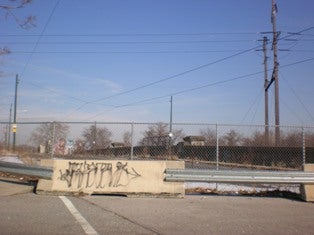
On January 28, after months of discussions, Lutz and the Streets Department gave Amtrak permission to do preliminary construction work on the 40th Street Bridge. This phase will take one year, and will include the rerouting and rebuilding of electrical systems and catenaries. Workers will then demolish the old bridge and build a new one according to a design already approved by the Art Commission. Because each of the old 40th Street Bridge’s bays contains electrical lines, Lutz says this will be “tough work,” and estimates that the new 40th Street Bridge will be open in 2012.
Only then can work begin on the 41st Street Bridge, which is saddled with electrical lines and a gas main. The gas main, says Lutz, cannot come out of service until the new 40th Street Bridge is up and running. Based on this timetable, Lutz estimates that the new 41st Street Bridge will be open in 2014.
Lutz is extremely optimistic about the project and its impact on the community. “This will be one gem of an area once these bridges are completed,” he said in a January 29 interview.
In the meantime, the neighborhood has shown some signs of rebirth, especially along Parkside Avenue. Several grand homes, known as the Brantwood Apartments, have been redeveloped as low income housing and are in excellent exterior repair. The Lansdowne, a fanciful, turreted Queen Anne apartment building at 41st and Parkside, also has been restored to a good deal of its former grandeur. Leading the redevelopment effort is well-known community activist Jim Brown. According to Heller, Brown had helped oversee millions of dollars worth redevelopment projects, including the Brantwood Apartments, over the past thirty years.
In addition, the “Please Touch” Museum has moved into Memorial Hall, the only major Centennial Exposition structure and once home to the art museum that has survived to the present day. The 38,000 square foot museum not only boasts kid-oriented exhibits, but a restaurant and a one hundred year old carousel.(i)
Regarding redevelopment of vacant structures, Greg Heller agrees that East Parkside is “a logical place for student housing.” And despite the recent real estate meltdown, Heller remains optimistic about the area’s future. “Even though the neighborhood is disinvested, and appears very rundown,” he wrote in a January 29 email, “there is tremendous speculation from regional developers and a number of folks from New York. The Microsoft School and Please Touch Museum, not to mention the City’s Centennial District planning, really caught people’s attention, and there is expectation that Parkside will gain value when the market turns.”
All of these are good signs to community leaders, who take pride in the area’s history and hope for a more vibrant future.
The East Parkside CRC has published a community revitalization plan on its website. Developed with the aid of the University of Pennsylvania, the Brookings Institution, the Philadelphia City Planning Commission, and the Urban Land Institute, the plan calls for a new mixture of low-income and market rate housing, as well as modernized commercial spaces. Structures will be built or renovated according to LEED standards, and pricing will be arranged to minimize displacement of existing residents.
Robert Cousar hopes that the new bridges, hopefully adorned with improved lighting and attractive signage, “will tie into what our community is becoming. We are the gateway to the Centennial District.”
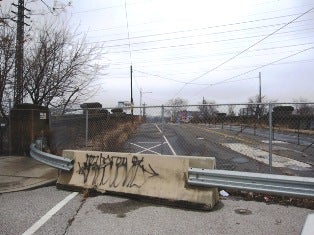
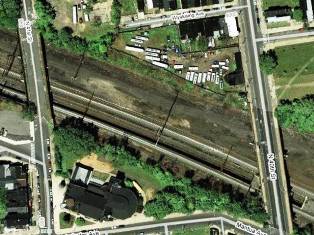
(i) East Parkside Community Revitalization Plan
http://www.eastparkside.org
Contact the reporter at steven.ujifusa@gmail.com
WHYY is your source for fact-based, in-depth journalism and information. As a nonprofit organization, we rely on financial support from readers like you. Please give today.



